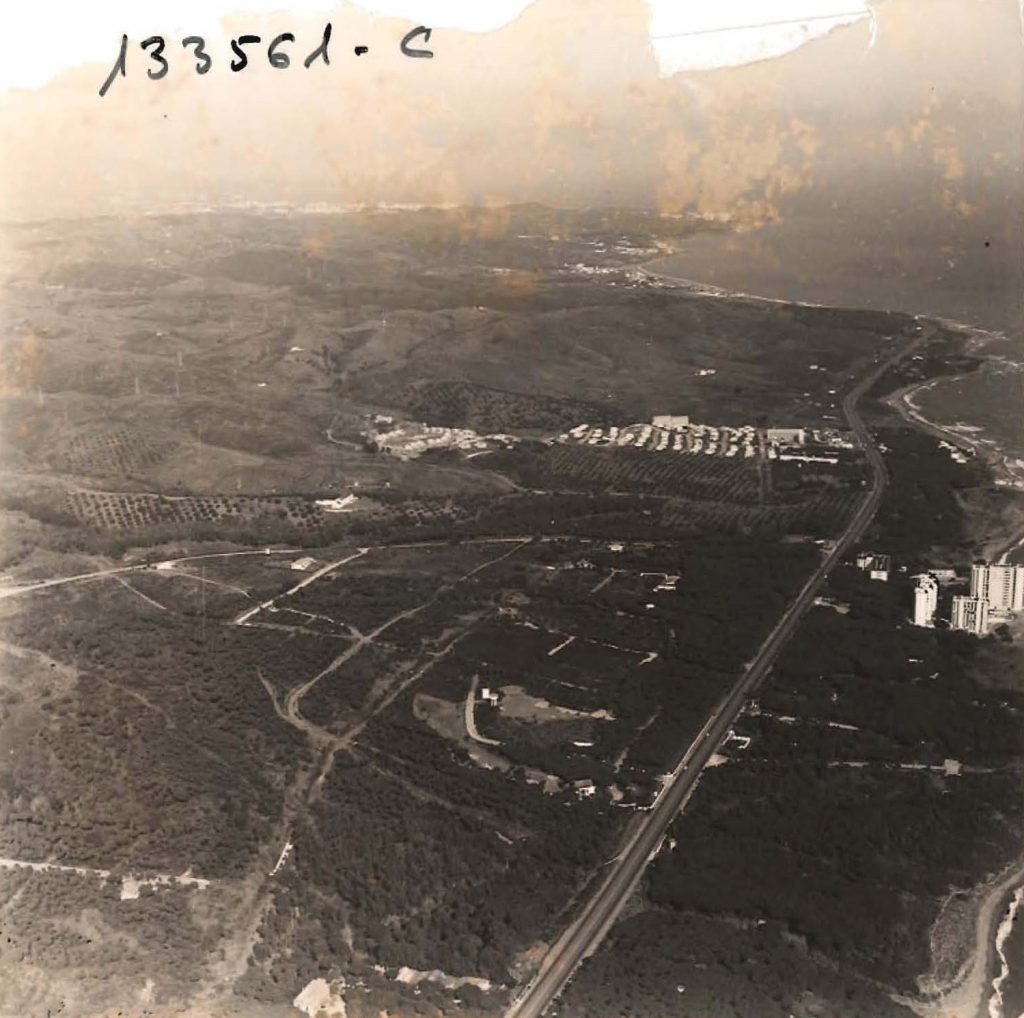– Page 3 –
At the time I took charge of Calahonda, the urbanised infrastructure was limited to Avenida de España and the beach road. Among the first four homes was that of my father, José de Orbaneja, on Calle Málaga -which in time became the La Naranja Club-; that of Mariano Medina -at the time the famous ‘Weather Man’ on television- on the beach section; my own, and that of writer Santiago Loren on Avenida de España. Other well-known celebrities had also bought homes here, among whom were flamenco dancer ‘La Chunga’ and writer Edgar Neville. A detail that is not generally known is that the original name for the area was simply ‘Calahonda’, which is what we wanted to call the urbanisation, but were unable to because there was a hotel with that name already. Thus was born the historic name of the urbanisation: ‘Sitio de Calahonda’.
To give even an approximate idea of the enormous task of creating the urbanisation, there is a similarity to the work of a potter who turns his piece of malleable, damp clay, giving it shape; he then waits for it to dry as one who waits for a fruit to ripen, and finally he decorates it and places it in the kiln to set its colours and designs… As though it were a photograph of a landscape that needs a human figure to give it its true proportions, let us place instead what was then the Town Hall of Mijas: there is the Mayor, Miguel González Berral, a secretary and a municipal policeman. Looking at it today, with its vast staff and large building, one gets an idea of the proportions of the present municipal administration. When the Mayor of the day heard our proposals for the urbanisation, which in its original concept allowed for homes for up to 45,000 people, he looked somewhat askance… His thinking was transparent: here is another ‘ghost’ of the kind that frequented the Costa del Sol at the time. The fact is, though, that the Mayor gave us all kinds of facilities, despite his evident misgivings. His objective must have been, naturally enough, to promote the growth of his district, creating jobs and bringing prosperity to Mijas. The Costa del Sol kept turning and turning on the potter’s wheel, taking shape slowly under the hands of its pioneers-cum-artisans…
Together with the supply of water came another vital concern: a proper drainage system. At the beginning it was deemed unnecessary to create a network, but in 1976 came a new Town Planning ordinance under which a proper system was required. Water purifiers were built at the end of each of the urbanisation’s streams, at the plant nursery, Calahonda Beach and Calahonda Park. However, in 1984 they became obsolete under the new Integrated Drainage Plan of the Costa del Sol, when the urbanisation’s network was connected to the coast-wide system.
There were times that appeared to threaten the development of the entire urbanisation, as when the developers refused to reserve land for a proposed toll-road. They believed that such a road, so close to the coastline (the proposal at the time would have brought it through what is today La Naranja Club), not only created obstacles to their developments but also did not take into account the great priority at the time, which was to decongest the N-340 road in favour of the development of tourism. In time, we were proved right. A co-operative of Costa del Sol developers was created at about that time. Headed by Alfonso de Hohenlohe, it carried out a socio-economic study of the area, the result of which, and thanks to the support of some politicians, was that the proposed road plan was halted because it would have invaded almost every development on the coast, threatening its future and not in the least solving the enormous road communications problem that was coming. History was to repeat itself years later, when the Ministry of Public Works and Town Planning (MOPU in its Spanish acronym) tried to impose a land set-by for the new toll-road, which was also unacceptable as the plans for the newly proposed road were still incomplete. This lack of set-by land caused a nine-year delay for approval of the Partial Plan for the third phase of Calahonda.
The matter of road communications took a great leap ahead in 1968 when the N-340 was widened to include two lanes in either direction. Although years later the growth of tourism became such that it was necessary to convert the road into a highway, to have four lanes in the late 60s was vital to the development of our district. Resistance to a plan for a road that could truncate the development of the entire coast continued with pressures and demonstrations that became a real ‘fight’ (though, at least on the part of the developers, always peaceful and open to dialogue) that has recently resulted in a road further to the North, to which a direct connection to Calahonda -including a tunnel and access from the upper part of the urbanisation- was obtained, the only one, in fact, between Fuengirola and Marbella.
 +34 695 223 964
+34 695 223 964

